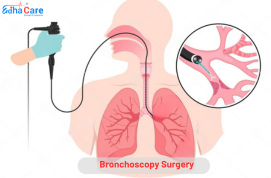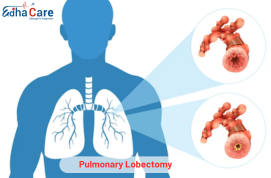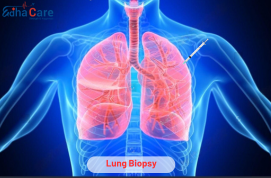Bronchoscopic Lung Volume Reduction

A minimally invasive procedure called bronchoscopy lung volume reduction (BLVR) is used to treat severe emphysema. Using a bronchoscope, tiny single-way valves or coil are implanted into the lung airways during the procedure. By obstructing unhealthy tissue in the lungs, these devices enhance the function of the lungs overall by facilitating the more efficient operation of healthy lung tissue. For patients with serious emphysema who might not be good candidates for conventional lung volume-reducing surgery, bronchoscopy lung volume reduction (BLVR) may improve quality of life while decreasing symptoms like shortness of breath. It is frequently carried out as a component of an all-encompassing chronic obstructive pulmonary disease (COPD) treatment plan.
Book an AppointmentAbout Bronchoscopic Lung Volume Reduction
Symptoms: Due to damaged tissue in the lungs and compromised breathing, patients with serious emphysema may feel symptoms like weariness, wheezing, tightness in the chest, and shortness of breathing.
Causes: Long-term exposure to irritants including smoke from cigarettes, air pollution, and chemicals and dust from the workplace is a common cause of emphysema. These elements induce lung tissue degeneration and inflammatory processes, which impairs the breathing process and causes air to become trapped in the lung.
Solutions: For patients with severe pulmonary bronchoscopy lung volume reduction (BLVR) is a form of minimally invasive surgery that can assist improve lung function and relieve discomfort. Additional treatment options include therapy with oxygen, lung recovery, medicine (inhaled corticosteroids, bronchodilators), and lifestyle changes (quit cigarette smoking, for example). For qualifying individuals with end-stage emphysema, a lung transplant may be considered in certain circumstances.
Procedure of Bronchoscopic Lung Volume Reduction
Preoperative Evaluation: Patients undergo a thorough assessment, including pulmonary function tests, imaging studies (CT scans), and bronchoscopy, to evaluate lung function and determine eligibility for BLVR.
Anesthesia: The patient is placed under conscious sedation or general anesthesia to ensure comfort and immobility during the procedure.
Bronchoscopic Insertion: A bronchoscope, a thin, flexible tube with a camera and instruments, is inserted through the mouth or nose and guided into the airways of the lungs.
Device Placement: One-way valves or coils are inserted into targeted airways using the bronchoscope. These devices are designed to block off diseased areas of the lungs, allowing healthier portions to function more efficiently.
Lung Function Assessment: Throughout the procedure, the medical team monitors lung function and assesses the effects of device placement on airflow and lung volume.
Confirmation: Following device placement, imaging studies or bronchoscopy may be performed to confirm proper placement and assess lung expansion.
Postoperative Care: After the procedure, patients are monitored in a recovery area to ensure stability. They may experience coughing, shortness of breath, or mild discomfort, which typically resolves within a few days. Follow-up appointments are scheduled to assess lung function and monitor the effects of BLVR on symptoms and quality of life.
Require Assistance?
Get A Quick Callback From Our Healthcare Experts






